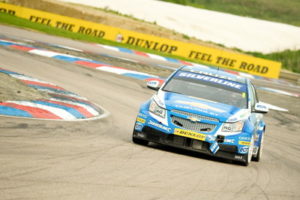 With the vast majority of sports it’s easy to understand how they became competitive events. Whether it be football, tennis or golf, it’s not complicated to figure out how they went from being invented in the first place to becoming things that the competitors wanted to win at someone else’s expense. The same is perhaps even more true when it comes to racing cars, given that even the most placid grandma popping to the shops must be tempted to put her foot down if she sees her rival from bingo pull up next to her at the traffic lights.
With the vast majority of sports it’s easy to understand how they became competitive events. Whether it be football, tennis or golf, it’s not complicated to figure out how they went from being invented in the first place to becoming things that the competitors wanted to win at someone else’s expense. The same is perhaps even more true when it comes to racing cars, given that even the most placid grandma popping to the shops must be tempted to put her foot down if she sees her rival from bingo pull up next to her at the traffic lights.
There’s something primal about being behind the wheel of a car, which is odd in many ways when you consider that it’s a thoroughly modern invention. It’s not hard to imagine cavemen wanting to faster than each other in makeshift chariots once they’ve discovered the joy of the wheel, though.
The predominant form of the sport in the UK is the British Touring Car Championship, which was established in 1958 and which will form the basis of what we look at here, given the otherwise wide-ranging nature of the sport. The key thing to remember is that this is an event for road-going cars that have been adapted to give them some extra verve.
Best Bookie For Pool Betting
William Hill

If you were betting on F1 or speedway you could pretty much choose any major betting site and find markets, with Touring Cars, however, you need more of a specialist. On of the best bookies for providing markets for big Touring Car events like the Championship is William Hill.
They are often not seen as a betting brand for this type of thing but there shear size means they are one of the few who are able to price races.
They have ante-post outright markets longer in advance than others and more lines available closer to the race day and in-play.
Betting On Touring Cars
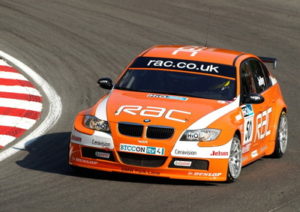 As with most of the other more obscure sports looked at on these pages, betting on touring cars is somewhat limited if you’re only looking at the biggest companies. These are the ones that make the majority of their money by only covering the main events in the biggest sports, so they don’t spend all that much time investigating smaller markets for a limited number of customers.
As with most of the other more obscure sports looked at on these pages, betting on touring cars is somewhat limited if you’re only looking at the biggest companies. These are the ones that make the majority of their money by only covering the main events in the biggest sports, so they don’t spend all that much time investigating smaller markets for a limited number of customers.
There are obviously some specialist bookies out there that can offer you more in-depth markets, but you need to be wary of them and make sure that they’re on our list of trusted bookmakers. Also, don’t forget that many of the big companies now offer the ability to request bets, so if you know the market that you want to be betting on then it might be worth getting in touch with them and asking them for odds.
Otherwise, the main markets you’re likely to find will be on the outright champion at the end of the touring car season. It’s perhaps a little boring, but it’s the best way of ensuring that you can place a bet on the sport with a trustworthy bookie.
The History Of The British Touring Car Championship
Ken Gregory
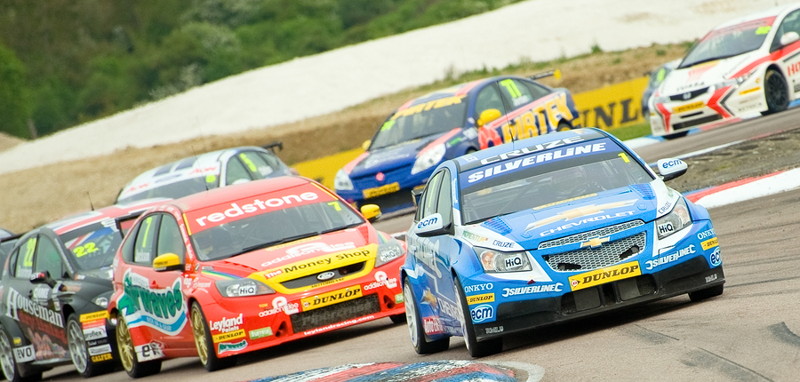
As mentioned in the introduction, we’re going to concentrate on the British Touring Car Championship, not only because it is one of the oldest but also because it is the most relevant. In order to do so we have to travel back to the 1950s and a man named Ken Gregory.
Gregory had been Stirling Moss’s manager and he noticed that saloon car racing had proven to be popular with both competitors and the watching public. He was also aware that there was no specific competition in existence that allowed the leading car manufacturers to show off their creations.
With the industry attempting to recover from the stresses and strains on their businesses inflicted by the Second World War, it didn’t take Gregory long to persuade the British Racing & Sports Car Club long to fill this particular gap in the market. It helped that he was secretary of the Club, of course, as well as the fact that they already ran Championships for 500cc Formula 3 and sports car classes, so it wasn’t a stretch to add another class of car to the events.
The decision was to adopt four different classes of saloon car racing to match the engine capacities offered by manufacturers. Theres were:
- 1200cc
- 1201-1600cc
- 1601-2700cc
- 2701cc and over
The First Championship
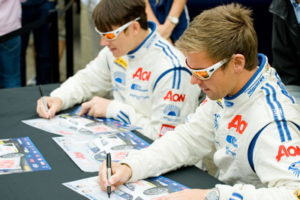 The rationale behind the British Touring Car Championship when it was first created is the same one that remains today: to offer current versions of production cars a competitive arena in which to test themselves. That’s what was behind the thinking when the very first race took place at Brands Hatch on Boxing Day of 1957. Tommy Sopwith won the race, driving an Equipe Endeavour 3.4-litre Jaguar across the finish line faster than any other driver.
The rationale behind the British Touring Car Championship when it was first created is the same one that remains today: to offer current versions of production cars a competitive arena in which to test themselves. That’s what was behind the thinking when the very first race took place at Brands Hatch on Boxing Day of 1957. Tommy Sopwith won the race, driving an Equipe Endeavour 3.4-litre Jaguar across the finish line faster than any other driver.
It was the start of a successful season for Sopwith, who went on to win his class. The problem was that he finished on the same number of points as Jack Sears who had been driving an Austin A105 Westminster and the two of them therefore won their own classes. The Competitions Manager of the British Motors Corporation, Marcus Chambers, came up with a solution: the two drivers would drive a pair of five-lap races in identical 1.5-litre Rileys, swapping cars after the first five-laps.
Sopwith won the first five laps, beating Sears’s time by 2.2 seconds, but the latter responded in kind when they swapped cars and won the second set of five laps by 3.8 seconds, giving him the Championship title by 1.6 seconds. It was, perhaps, an unfair ending to the season for Tommy Sopwith who had won the most senior of the four classes by earning victory in eight out of the ten races and setting records in eight laps during that time. It was a cruel blow, but one that he would not be alone in suffering as the Championship developed.
The Championship Develops
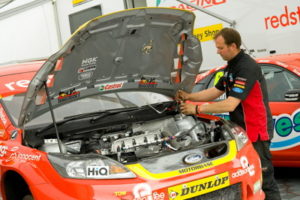 In the more formative years of the competition, pretty much any performance saloon was considered as being a viable option. From smaller cars such as the Austin A35 and Ford Prefect through to the larger 3.4 Jaguar and Ford Zephyr, there was a decent variety of options for drivers to choose from. Even so, in 1960 a decision was taken to allow what were referred to as ‘silhouette’ special saloon cars into the Championship, with rules allowing 1000cc free formula cars to be used.
In the more formative years of the competition, pretty much any performance saloon was considered as being a viable option. From smaller cars such as the Austin A35 and Ford Prefect through to the larger 3.4 Jaguar and Ford Zephyr, there was a decent variety of options for drivers to choose from. Even so, in 1960 a decision was taken to allow what were referred to as ‘silhouette’ special saloon cars into the Championship, with rules allowing 1000cc free formula cars to be used.
It wasn’t seen as a particularly big success, with Doc Shepherd dominating the series in am Austin A40 that had been prepared by Don Moore. It resulted in the decision to remain loyal to the notion of it being a Championship for production cars, with rules altered to allow some technical development. This was done using the same set of rules and regulations that the FIA European Touring Car races had put in place for their Group 2 vehicles.
The result was an increase in the amount of support given to the Championship by manufacturers, which in turn led to a decision to require proof of a minimum number of units being produced before a manufacturer would be invited to take part in the competition. Rules were also introduced to mean that cars could only have modifications applied to them in the races if they were also available for retail. This slowly began to result in the diminishing of Jaguar’s power in favour of a far smaller and more crowd-pleasing car: the Mini.
American Muscle Cars Join The Circuit
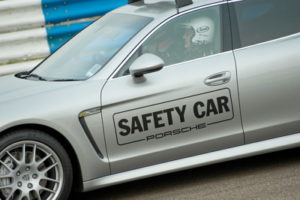 In 1961 a driver from the US named Dan Gurney made an impact on British racing when he turned up at Silverstone driving a V8 Chevrolet Impala. It joined several Ford Galaxies that were already on the tour and soon teams began to drive the likes of the Chevrolet Camaro, the Ford Mustang and the Ford Falcon in order to completely change the face of the competition. Indeed, the winner of the first Championship, Jack Sears, returned to the podium in 1963 driving a combination of Ford and Lotus Cortinas and the Ford Galaxy.
In 1961 a driver from the US named Dan Gurney made an impact on British racing when he turned up at Silverstone driving a V8 Chevrolet Impala. It joined several Ford Galaxies that were already on the tour and soon teams began to drive the likes of the Chevrolet Camaro, the Ford Mustang and the Ford Falcon in order to completely change the face of the competition. Indeed, the winner of the first Championship, Jack Sears, returned to the podium in 1963 driving a combination of Ford and Lotus Cortinas and the Ford Galaxy.
Such was the domination of these new cars that the BTCC had to introduce new Group 5 regulations that were stricter than those for Group 2. The key ruling was that the cars had to maintain their original silhouette and be identifiable without any trouble. The regulations didn’t put too many limitations on the engine tuning and use of suspension, however, meaning that manufacturers could make the cars both fast and loud. This was seen as being beneficial to the watching public, with the Championship having already been fun to watch but now becoming super-charged.
The Dropping Of Classes
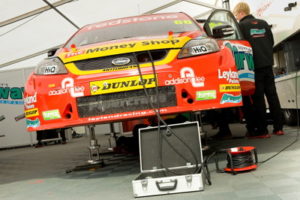 Those in charge of the British Touring Car Championship explored numerous options to alter the way that it worked over the years, including altering the class divisions in 1974 so that they looked like this:
Those in charge of the British Touring Car Championship explored numerous options to alter the way that it worked over the years, including altering the class divisions in 1974 so that they looked like this:
- Up to 1600cc
- 1601-2500cc
- 2501-4000cc
- 4000cc and over
The problem was that the winner of each class was given identical points, meaning that a clever driver could pick the right class and almost guarantee himself a Championship win. Indeed, during the 32 years that the BTCC was run using a class system, a driver in the largest engine division, which was usually the toughest division to win, won the overall Championship on just five occasions.
In 1990 the British Touring Car Championship brought in a new class for those cars that had an engine displacement of up to 2.0 litres. Initially they were run alongside the other classes but in 1991 the BTCC decided to scrap the class system altogether and introduce a new system whereby the 2.0 litre class was the only one that could race. It was a radical alteration to the way that the Championship had been run for nearly six decades, but it proved to a be popular choice with car manufacturers.
Soon teams from the lies of Nissan, BMW, Ford and Vauxhall were entering the new-look Championship. This led to a rapid sense of improvement in the quality of the cars being entered into the tournament, but it also resulted in rapidly rising costs for those that wished to compete. More and more manufacturers began to drop out of the Championship, meaning that by the time the 2000 season came to a close only Vauxhall, Honda and Ford were competing.
The Modern Era
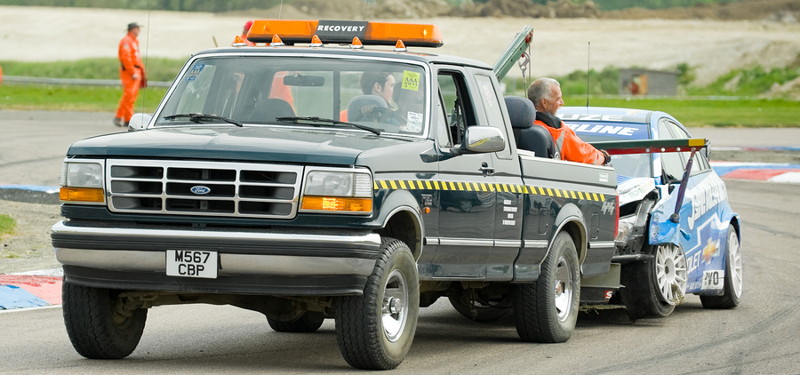
This resulted in the BTCC introducing new rules ahead of the 2001 season to attempt to reduce the cost of participating. Soon the rest of the industry, following the lead of the Fédération Internationale de l’Automobile, introduced the same restrictions. Even so, interest in the Championship, from both viewers and manufacturers, was amongst the lowest it had ever been. In the years that followed, numerous attempts were made to regain that interest, culminating in the 2009 introduction of the Next Generation Touring Car series that would come into being in 2011.
The aim of the NGTC series was to reduce the amount of disparity between the cars as well as making it both cheaper and easier to run them. At the time of writing the cars that are used by manufacturers competing in the Championship are a mix of 2.0 saloons, estates and hatchbacks. All cars have to be built to the same set of regulations, resulting in the NGTC being the main class of cars and Hybrid offerings being the second class.
How Touring Car Racing Works
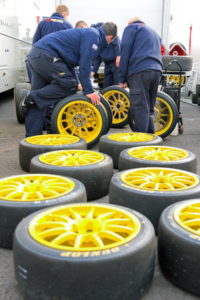 There are certain characteristics that match touring cars, regardless of the country the races are taking place in and the specific rules that are in play there. The chief thing is that touring car competitions require participating cars to have the standard body of a car, what is known as the silhouette.
There are certain characteristics that match touring cars, regardless of the country the races are taking place in and the specific rules that are in play there. The chief thing is that touring car competitions require participating cars to have the standard body of a car, what is known as the silhouette.
Most of the various competitions allow manufacturers to modify and alter pretty much every aspect of a car, including the brakes, suspension and engine. In fact, most of the regulations that are put in place are there to limit the amount of money being spent by manufacturers and avoiding the use of the more ‘exotic’ technologies that might only be available to the richer manufacturers.
The key thing to bear in mind is that touring cars are nominally based on the design and specifications of what you might consider to be ‘family cars’, so the hatchbacks, estates and sedans you’ll see on the road most often. This is different from the world of sports cars, which are typically coupés; think Ferrari, Lamborghini and so on.
When it comes to the races themselves, drivers need to complete a given number of laps of a circuit as quickly as possible and are given points accordingly. At the end of the series of races that are included in the Championship, the drivers’ total points won are added together and the person that has won the most is declared the champion driver.
The Biggest Touring Car Races
| Competition | Information |
|---|---|
| British Touring Car Championship | Founded in 1958, the Championship requires cars to use Turbocharged 2.0 litre I4 engines and Dunlop tyres. It visits numerous circuits around the country and features two practice sessions and a qualifying session on the Saturday before the main race of between 16 and 25 laps on the Sunday. |
| Deutsche Tourenwagen Masters | Inaugurated in 2000, this is the German equivalent of the BTCC. Unlike the BTCC, however, it does have some rounds that take place in different parts of Europe other than solely Germany. |
| Supercars Championship | This is a series based in Australia and New Zealand and run under Fédération Internationale de l’Automobile regulations. The format of the races varies immensely from venue to venue, offering sprint races of between 100 and 200 kilometres through to two-driver endurance races. |
Obviously this page has mostly been concentrating on the British Touring Car Championship, but it’s not the only one that exists. Above we take a look at some of the other touring car competitions that you’ll be able to place a bet on with the right bookmaker.
